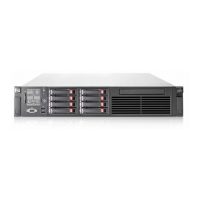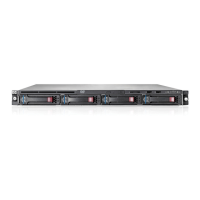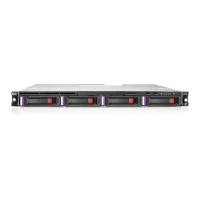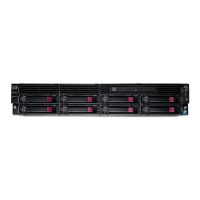Figure 6. Rapid response of Dynamic Power Capping avoids circuit breaker trips
Phase shedding
HP incorporated intelligent phase shedding into ProLiant G6 voltage regulators. Modern digital
voltage regulators deliver DC power using up to five different phases of high-speed power pulses that
charge capacitors to deliver straight DC power to components at the proper voltage. Each phase
delivers its power pulses in a rotating time window with the other phases in the voltage regulator such
that the power pulses from one phase do not overlap with those of another. The width of each pulse
determines the total power delivered by the particular phase.
Intelligent phase shedding lets the system BIOS turn off one or more of the power phases if it
determines that the component power requirements are less than the full amount of power from the
voltage regulator. This reduction in phases decreases the maximum power that the voltage regulator
can deliver and increases overall efficiency.
Phase shedding based on the installed processor
The G6
server ROM configures the number of phases based on the maximum power consumption of
the processor. This capability incurs no performance impact and requires no user configuration.
Memory phase shedding
Memory phase shedding operates m
uch the same way as processor-based phase shedding. At
power-up, the ROM BIOS determines the number of phases needed for the memory voltage regulator
based on the number of DIMMs installed. Memory phase shedding can save up to 2.5 watts per
DIMM socket. This feature is less effective on servers whose DIMM sockets are fully populated since
more phases are required to accommodate such a configuration. More phases mean more power
consumption.
16
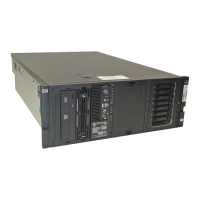
